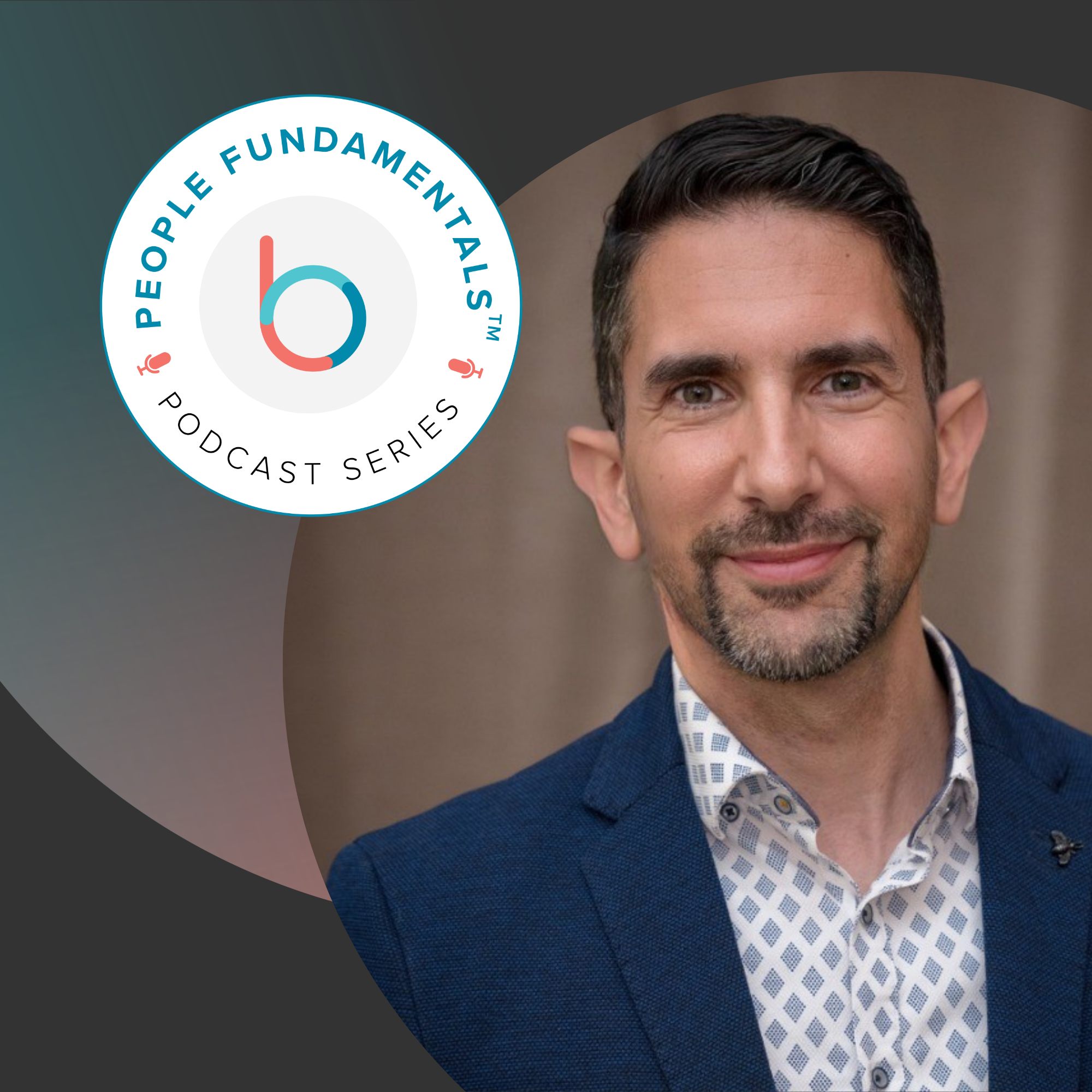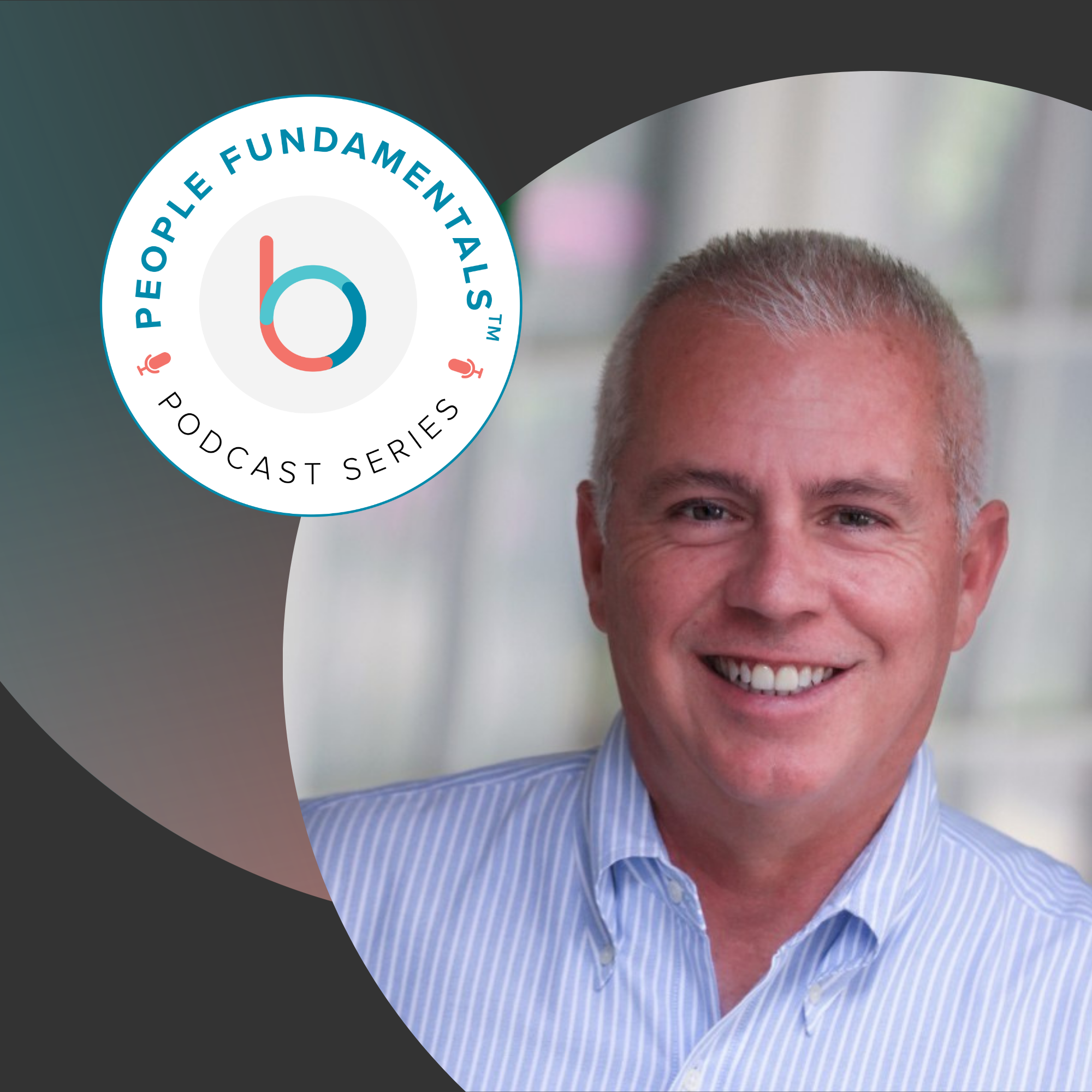It’s a brave new world for companies, one that demands efficient, effective, and seamless solutions across all phases of employment – from recruiting and onboarding to ongoing engagement plans and exiting – to create an impactful, satisfying employee experience. In the past, HR has treated each of the components behind that experience – employee engagement and development, company culture, reward systems, listening, and others – as separate entities with distinct managers, platforms, and metrics. Going forward, however, it’s in an organization’s best interest to view the employee experience as their employees do – as integrated pieces of a larger puzzle.
From an employee’s perspective, these pieces interlock, act, and react with one another, just as the different pieces of their own lives do. Emotional well-being impacts physical health that affects their career and, ultimately, their personal finances. Lines are now blurred – both at work and home – with no distinct borders and barriers between the many aspects of the average employee’s life.
Today’s workforce expects an employee experience that takes all of these different pieces into account, designed to address the whole rather than individual parts. Furthermore, given the rapid pace of modern life and the overarching convenience provided by mobile technologies, employees also expect immediacy and ease with that comprehensive, interwoven experience.
But in order to understand how well your organization is meeting the expectations of your people, you have to effectively collect and analyze employee feedback for each touchpoint of the employee experience.
Feedback Is the Cornerstone to an Effective Employee Experience
A singular event or moment does not define the employee experience. It’s broad and dynamic with roots established at the very beginning of the employer/employee relationship. Candidates are already assessing an organization, picturing what their life would be like if they worked at a particular company, even before the first interview is conducted.
As the graphic above demonstrates, betterworks Engage gauges the employee experience across the entire spectrum of employment, from the recruiting and candidature stage to the exiting and even alumni phase, and all points in between. While the individual stages feature unique characteristics and expectations, a single common thread weaves between each of them – the need for insightful, impactful employee feedback.
Gathering, analyzing, and acting upon consistent feedback in real-time is the only way an employer can fully understand the ever-shifting expectations, goals, and values of a dynamic workforce. The insights gathered throughout the feedback process, whether anonymous or not, become the cornerstone of a satisfying employee experience, allowing an organization to strategize with as much pertinent, timely people data as possible. The result, assuming a company is diligent and meticulous with their planning and execution, is an inviting, fulfilling employee experience that encompasses every phase of the employee journey. An effective way of obtaining feedback is to use QR Codes and deploy them at various points at the workplace, such as conference room, cafetaria, etc providing employees with the opportunity to scan & provide anonymous feedback with ease.
Perhaps foreboding at first glance considering the importance and required immediacy of the process, technology now affords organizations efficient solutions to their feedback needs. Instead of the antiquated annual survey that was never timely and rarely accurate to begin with, a feedback system that can distribute, collect, and interpret frequent pulse polls and engagement survey results gives management relevant, real-time, actionable insight to address issues and make changes before problems become systemic.
Engage’s platform, for instance, can be used from virtually anywhere and from nearly any device or platform common to the workplace. It can collect feedback from any type of employee – full time, part time, contractor, freelance, candidates, alumni – an essential ability since every team member – past, present, and future – is a wellspring of vital insight and innovation for a company.
Of course, collecting and analyzing the data is just the first critical step of the process. Creating an action plan that is designed and implemented based on the insights gathered by an effective feedback system is not only a best practice but, perhaps more importantly, expected from a workforce. If employees see a company using even the most innovative, informative feedback platforms but doing nothing with the results, they feel undervalued and unappreciated. Empty lip service can quickly destroy engagement and leave the employee experience in tatters.
In fact, taking specific steps at each stage of the employee journey will help companies take full advantage of the insights collected from an organized, effective feedback system. Beginning before a candidate joins an organization and ending after their exit, the employee experience requires cultivation at each of these phases based on the insights provided by an employee feedback platform that is agile, informative, convenient, and innovative.
Recruiting / Candidature
Both candidates and employers can easily lose sight of the bigger picture in the recruiting process, failing to recognize what a wealth of valuable information it can provide to both. While there are important considerations to take into account – the prospect of a new career direction for an applicant, a potential new team member for a company – neither should squander the potential insights that one can provide the other.
From an employer’s perspective, collecting feedback throughout the recruiting process can help find areas for improvement in the future. This feedback should focus on everything from the original job posting and hospitality displayed when arriving for an interview to the impression of the workplace and professionalism of correspondence.
Such feedback should be collected from a wide-ranging group and include applicants who have been extended offers as well as those rejected. Collecting from as broad a swath of applicants as possible minimizes the possibility of the results being skewed either too positively or negatively and, thus, not nearly as insightful as they would have been otherwise. Ideally, recruiting feedback would feature surveys for the applicant to complete that toe the line between convenience and depth, capturing as many characteristics about the interviewing candidate as possible.
The surveys, while retaining anonymity for the benefit of the candidate, should be thorough and cover the individual’s current progress in the hiring process, source and movement of the application up to that point, and the specific position they are interviewing for, all without revealing the applicant’s identity.
Likewise, open-ended questioning could also play a vital role in the surveys, asking each applicant to provide their honest thoughts on the hiring process, how to improve it, as well as what the ideal process might include. As previously stated, however, capturing the information is only the first step of an effective recruiting feedback system, albeit a critical one. Once an employer gathers the data, it must be appropriately analyzed and transformed into actionable insight to take full advantage of its abilities to improve recruiting as well as the first stage of the employee experience.
Engage’s platform, for instance, allows companies to thoroughly analyze often nuanced responses to gain information and guidance that normally might be missed by human-based, manual analysis. For recruiting, such analysis can reveal specific issues that impede the progress of talented individuals or even qualified applicants entirely skipped over due to flaws in a company’s hiring procedures. A variety of resulting metrics – an organization’s offer-to-acceptance ratio, for example – can measure the overall efficiency of the process, isolate underlying issues, and provide a sense of direction on how to fix them.
Onboarding and New Hires
Successful onboarding procedures provide a lasting positive impact over the duration of a new team member’s employment with a company. In fact, nearly 70% of workers are likely to remain with an employer for at least three years if the onboarding experience was positive. Furthermore, 58% of new employees who participated in an organized, structured onboarding process and employee engagement strategy were also likely to stay for at least three years.
Even a standard onboarding process results in 50% greater productivity from newly hired employees. Since research has shown that new hires typically get about 90 days to prove their value in a new position, the boost in productivity created by successful onboarding significantly decreases the amount of time an employee needs to start adding tangible value to a company’s operations and overall mission. Given the high costs of attrition – regarding both money and time – companies simply cannot afford to have substandard onboarding procedures.
Beyond the various employee feedback categories that we’ve discussed in the past, the company should also strive for a better understanding of an employee’s thoughts throughout onboarding and the orientation process. This feedback should include open-ended questions that allow employees to judge their performance up to that point. Specific questions like the following will also be beneficial in improving onboarding procedures:
- What in particular was positive or negative during your first few weeks in the office?
- How well do you understand the business concept in your task?
- Are there any questions still needing answers?
- Which developments or improvements do you wish to see from the company?
Along the way, monitor a new employee’s productivity rates and overall performance to see if the feedback they’ve provided accurately reflects how well they’ve performed in their new role. Discrepancies between the two could very well be a simple matter of miscommunication or easily adjusted shortcomings so identifying them early can save a company months, sometimes years of diminished productivity and weakened employee experience. Frequent surveys can significantly help companies identify these sources of miscommunication or performance shortcomings throughout onboarding.
To that point, surveys should be sent far more frequently during this stage than at later points of employment, preferably after the first day, first week, first month, and first quarter in their new position. Keep these frequent surveys brief during onboarding, no more than ten questions and limited open-ended questions. Short but frequent pulse polls should also be sent throughout the first quarter to gauge the onboarding process for the new hire accurately.
Since no two organizations are exactly alike, however, survey questions and schedules should be customized to fit a company’s own onboarding process. As each milestone is reached and completed, collect specific feedback about those segments while they are still fresh in a new hire’s mind. While this might seem cumbersome, particularly if a large incoming class was involved, an automated feedback system like Engage’s makes the process fast, convenient, and extremely effective.
Engagement
Of course, the majority of team members spend the bulk of their employment between the onboarding and exiting stages. Fostering healthy employee engagement plans throughout employment is imperative in creating a satisfying employee experience that will increase productivity, reduce attrition, and attract new talent to the company.
At its core, employee engagement is the primary driver behind a team member’s emotional commitment to a company and its collective goals. An engaged workforce is one that performs their responsibilities with personal stakes in mind, understanding the mutually beneficial relationship between individual performance and company success.
Although, traditionally speaking, quantifying something as seemingly qualitative as employee engagement levels was a daunting task, innovative platforms like Engage can streamline the entire process. With Engage’s help, companies can develop feedback systems that will provide the insights needed to maximize engagement and, therefore, enhance the employee experience.
Using a combination of frequent but concise polls to obtain a quick pulse on various employee experiences as well as longer form, more expansive engagement surveys – ideally, no more than once per quarter – management is provided a comprehensive, thorough, and timely picture of employee satisfaction. These insights should be used to design policies and procedures meant to continually improve the employee journey.
Top-down feedback tools like surveys and polls should also leverage anonymity to eliminate fear of judgement – and the accompanying biased, inaccurate data – and provide an unfettered perspective of an individual’s opinions regarding their position, organizational procedures, and the company itself. A comprehensive feedback strategy effectively guides policies with an immediacy that traditional annual surveys are incapable of accomplishing in such a dynamic environment, ultimately allowing employers to better define the employee experience. To better understand employee needs, consider using an employee experience platform.
As a powerful tool in combating attrition, these top-down engagement surveys and pulse polls should also accompany important professional and personal events in a team member’s life – including employment anniversaries, birthdays, class reunions, and a variety of other personal milestones. These events often serve as the trigger mechanism to an employee leaving a company, increasing job hunting rates as high as 16%.
To further increase the benefits of feedback-driven people data, organizations can simultaneously use crowd-sourced, open-ended channels that provide bottom-up insights on topics not specifically determined by management. A bottom-up approach is imperative to fostering innovative thinking and open communication that is representative of every employee’s thoughts and mindset.
Companies with the most effective and comprehensive employee engagement procedures often share similar characteristics that other organizations can use as a template, including:
- Productivity improves when employers give their employees the opportunity to relax and enjoy themselves
- Employees thrive in a supporting, uplifting team environment
- No matter their place within an organization, workers want realistic but impactful goals that truly matter to the company
- Employees expect well-defined values that lend meaning to their positions and place within an organization
Companies that embody these best practices can maximize engagement with supportive environments, fun activities and perks, and strong values that provide meaning to their position within the overall community. If an organization takes these concepts to heart and uses them as the basis for employee engagement, they can be much more specific with their engagement surveys and hone in on questions and concerns that impact productivity, innovation, and longevity. The highly targeted feedback system used to create a well-informed sense of employee engagement enhances the employee experience and benefits every facet of the organization.
Exit
With so much emphasis placed on recruiting and employment, it’s easy to lose sight of the impact the exiting process can have on improving the employee experience. Again relying on a technology-based feedback platform, employers can use exit interviews, polls, and surveys to better understand why employees leave and design new strategies to prevent similar circumstances in the future.
As it stands, only 29% of organizations use formal off-boarding procedures, effectively eliminating the opportunity to use the process as a critical source of insight. If a departing employee knows their thoughts and feelings about the company are valuable to the organization in improving employee satisfaction, they will likely be more open and frank with their opinions. From an organizational perspective, any single exit interview or survey could very well provide critical information that leads to future success in that vacant position.
Anonymity could play an essential role towards inducing this much-needed honesty, lending more importance to anonymous surveys to provide an unbiased opinion that is far more difficult to obtain using face-to-face exit interviews. That isn’t to say, however, that face-to-face interviews don’t have their time and place in the process. In fact, the combination of personal exit interviews with precisely worded surveys provides the most insight into the factors responsible for the employee leaving in the first place.
When constructing those precisely worded surveys, HR should keep in mind that the dynamics behind an employee leaving the organization are often complicated and the product of several different events, circumstances, and factors that, collectively, have led the worker to find other employment. This nuanced reasoning can be subtle and, therefore, difficult for even highly skilled HR representatives to pick up during an exit interview. In that light, organizations should always include questions that in some way address the following to take full advantage of the benefits afforded by open-ended surveys:
- What led you to the decision to leave the company?
- Did your expectations align well with the responsibilities and demands of your position?
- Were you provided the necessary tools and resources to perform your responsibilities effectively?
- What aspects of the organization did you enjoy most?
- What aspects did you like least?
Likewise, with possible motivations for leaving stemming from a wide variety of potential factors – from low pay and inferior benefits to misguided management and an unhealthy workplace – exit interviews and surveys should concentrate on providing the much-needed data that management needs to improve all aspects of the organization. As previously discussed, however, taking action on such insights is the only way the company will enhance worker satisfaction and the overall employee experience.
Alumni
Depending on the circumstances prompting an employee to leave an organization, the most beneficial information is often gathered weeks after the worker’s final day with a company. Organizations should take full advantage of the healing power of time – particularly if an exit was contentious in some way – by sending out an alumnus survey 2 to 4 weeks after the exit.
While such a delay might impact survey participation rates, it will also result in more genuine and reliable opinions and thoughts that, for whatever reason, weren’t available during the actual exit. An incentive might help boost participation rates as well as short, concise surveys that include no more than ten questions.
After the initial alumni survey, send another two months later to see if responses have changed or if anything significant slipped through the cracks during previous surveys and exit interviews. This stage of the feedback process is an instance where there is no such thing as too much data – an organization can always discard unneeded information but can never manufacture organic insight on its own.
Assuming management is not deeply involved in the process, extract insightful data points so company leaders are made aware of repetitive factors that could be leading to attrition. Recurring issues found in multiple alumni surveys could be indicative of a systemic problem that demands immediate attention.
Secondary Employee Experience
Your employee feedback strategy can also be especially insightful in gauging the competitiveness of an organization’s compensation and benefits, learning and development, leadership, communication, and various other internal initiatives. Each of these components of the Secondary Employee Experience can play a significant role in enhancing the overall experience and must be given proper attention to develop a satisfying, lasting sense of pride and contentment between a workforce and an employer.
Compensation and Benefits
While compensation is obviously an important consideration, as we’ve discussed before, it isn’t the primary driver behind higher attrition rates. Instead, focus on developing a strong, healthy corporate culture that emphasizes personal growth and a genuine commitment to improvement driven by the insights stemming from a consistent feedback system. Also, don’t underestimate the impact benefits have on both employee satisfaction and the ability to attract new talent.
Research indicates roughly 60% of people consider benefits a significant factor when deciding whether or not to accept a job offer. Likewise, 80% employees would opt for additional benefits over higher compensation. Feedback tools like surveys and polls will help an employer gauge employee satisfaction with their benefits and decide if they need to be improved to stay competitive. Like compensation, however, feedback on benefits doesn’t need to be more frequent than once or twice a year.
Learning and Development
As Baby Boomers retire and millennials become the focal point of the workforce, organizations need to be especially cognizant of their particular, sometimes even peculiar, expectations regarding training and career development. While an estimated 87% of millennials, for instance, place a high value on professional growth in their positions, millennials generally dislike one-on-one conversations with management, preferring feedback through other channels.
For that reason, feedback systems that rely on surveys and polls to collect valuable data concerning satisfaction levels and issues – particularly with younger generations – can be especially important. Such feedback should include topics like:
- Perceptions of the effectiveness of current training and career development programs
- Training programs including specifically requested skills
- Management’s perceived involvement and genuine interest in career development
- Where employees expect to be two years and five years in the future, how clearly their career path is defined, and how training programs might help them achieve those goals
A tangible, authentic commitment to career development demonstrates an employer is both willing and able to invest in its people, whether Gen Z or others. Such concern can pay both literal and figurative dividends down the road as workers that feel valued will want to succeed and, thus, help create an employee experience that propels the organization towards a prosperous future.
Engage’s sole focus is to provide companies the tools needed to collect, analyze, and act upon the wealth of people data sitting right in front of them. Those innovative tools – including AI-based sentiments, trends, driver analysis, and heat maps to identify hot spots from surveys in real-time – give employers agile, prescient solutions that provide the insight and flexibility needed to keep pace with an ever-evolving workforce.
When organizations establish effective feedback systems built on such powerful tools, they can take full advantage of the speed, convenience, and efficiency technology can provide, across all stages of recruitment and employment. When properly implemented, engagement increases, the employment experience enhanced, and the entire organization reaps the rewards.








